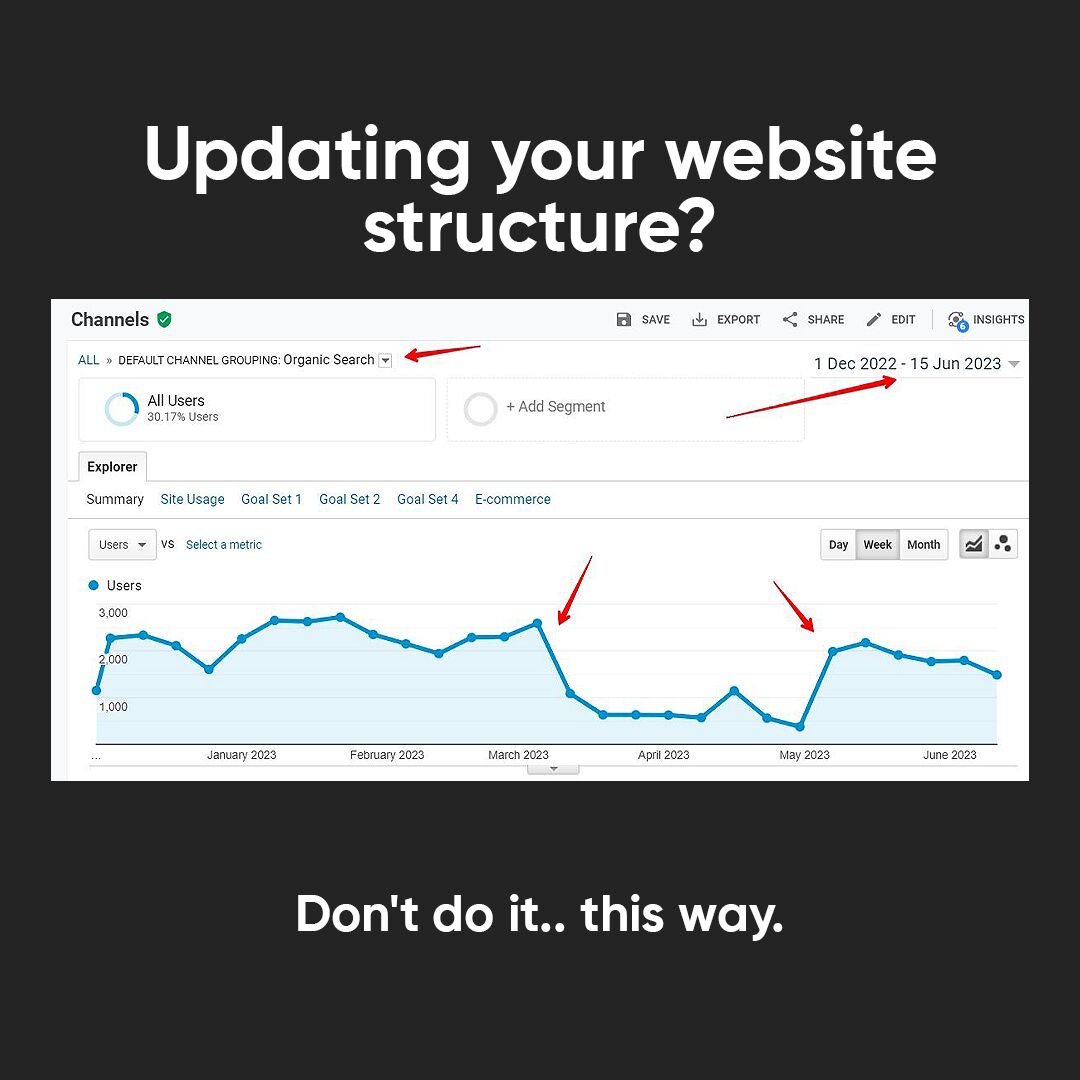
| Getting your Trinity Audio player ready... |
Have you ever changed a website URL structure? Recently we’ve received an “ASAP” request from a Tech company, which is losing visibility and traffic from SEO dramatically, together with potential Revenue.
I want to share here a similar example of a B2B project with the same story that happened this year.
It all started with the fact that the client decided to improve the structure of the site and increase its accessibility to users (new services, products, and vision of navigation). Every business does this, it’s ok:)
The Challenges
- Define the reason for the sharp decrease in traffic.
- Fix the problem as soon as possible.
After a short discovery phase, we found out, that the marketing together with the dev team changed the URLs of the website pages without taking into account the necessary redirect setup. Actually, they did it.. incorrectly.
Consequently, duplicated pages appeared on the site, which led to a decrease in traffic and visibility of the site, as the search engine incorrectly identified canonical pages.
Actions taken
- Creating the correct redirects: Each old page that has been moved to a new address should have a 301 redirect in place. This status code informs search engines and users that the page has permanently moved to a new location.
- Validating Redirect Functionality – this is important! Here was the problem in this case.
- Updating backlinks. I would recommend proactively updating external links, ensuring they lead to the new URLs (as much as possible). This proactive approach prevents lost traffic and makes it more sustainable.
- Sitemap Update: Once all changes and redirects were in place, we updated the sitemap.
- Monitoring: Checking/Double-checking.
The Result
- Reason defined.
- Problem fixed. One month after implementing the correct redirects, the traffic returned to its previous level+-. Full recovery is still in progress.
Takeaways
- When considering website structure or URL changes, collaborate closely with your SEO team to ensure a smooth transition, especially when optimizing SEO for an IT company.
- Double-check everything after changes.
- Constantly monitor your website with SEO tools after any changes.
Have a smooth website structure changes next time!
Source: Daniel Dramshev on LinkedIn.




